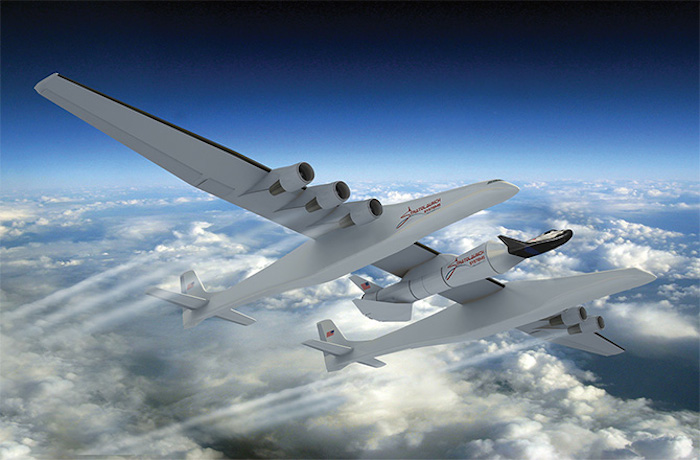-

Stratolaunch Systems is considering buying a smaller three-person version of Sierra Nevada’s Dream Chaser space plane to fly paying passengers into orbit.
The company, backed by MICROSOFT co-founder Paul Allen, is halfway through construction of the world’s biggest airplane.
“It’s a monster,” Stratolaunch executive director Chuck Beames said at the International Astronomical Congress in Toronto.
With a wingspan of 385 feet and six 747-class engines, the airplane is designed to serve as an airborne launch pad for sending satellites — and eventually people — into orbit. A debut test flight is expected in 2018.
Both satellites and passenger spaceships would be released from the plane at an altitude of about 30,000 feet, then ignite their own rocket motors to reach orbit.
The Dream Chaser, which Sierra Nevada has been developing in partnership with NASA, is a winged vehicle that resembles a space shuttle orbiter. NASA bypassed Sierra Nevada for its fourth and final round of development funds and flight contracts, though the company is challenging the decision. The Government Accountability Office is expected to rule by Jan. 5.
Meanwhile, Sierra Nevada has not been idle. In addition to a year-long study contract for Stratolaunch, the company this week unveiled a new global marketing campaign to flag Dream Chaser vehicles and/or missions for aspiring space nations.
To fly on Stratolaunch, Dream Chaser likely would be scaled down 25 percent, reducing crew size from seven to three (a pilot and two passengers).
“We looked at it and showed that it was completely feasible to do this,” said Sierra Nevada senior director Craig Gravelle.
The company declined to specify what upper-stage rocket motor the spaceplane would be paired with to reach orbit. Beames said studies are still underway, including using a more robust engine that could expand crew size to four.
“Dream Chaser seemed to be the logical way to go,” Beames later told reporters in Toronto. “We feel pretty good that we have enough analysis there. Paul just hasn’t made a decision yet.”
Allen is expected to decide on the project in November or December, Beames added.
Quelle: D-News
4312 Views
